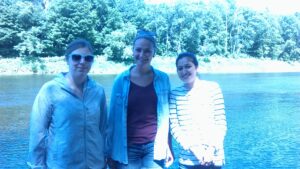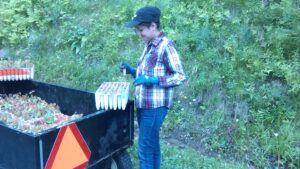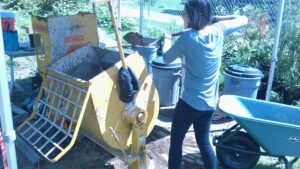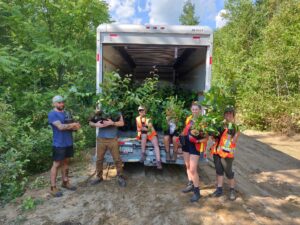My brief 8 week summer internship just flew by and I can’t believe that it’s over! This short, exciting 8 week journey, made possible by the Canada Summer Job program, was like a treat, really productive and awesome. My days at Conserver House, the office of the Conservation Council of New Brunswick and where I was able to work from, and the Nashwaak native tree nursery were very full and I had an excellent learning experience. I came across a lot of new things at the nursery which I had never done or experienced before in my life.
I joined the Nashwaak Watershed Association, on July 6th 2015, to learn more about how to manage the river watershed as a healthy ecosystem and this engaging experience has really expanded my knowledge and broadened my horizon about river conservation. I got some great opportunities to learn more about the decline of salmon returns in the Nashwaak and how this decline has impacted New Brunswickers by doing an interview with Peter Salonius, past president of NWAI and Gary Spencer, a fly fisherman and resident of the Nashwaak Valley. I learned about the worrisome decline of salmon returning to the ocean that has been ongoing since the mid 80’s as the juvenile fish migrating to the ocean aren’t surviving in the marine environment due to viral diseases present in salt water and the parasitic sea lice. I also learned about some possible solutions to this problem including tighter restrictions on salmon farming.
During the 8 weeks, I had a chance to meet Heather Loomer, the new project manager of NWAI (stay tuned for an introduction to Heather!), and got to learn a lot about the projects she’ll be working on to incorporate citizen science/community based monitoring in the Nashwaak watershed. Citizen science projects are “activities sponsored by a wide variety of organizations so non-scientists can meaningfully contribute to scientific research” (Wikipedia). Citizen science can be used to increase connection of a natural space and to document environmental conditions. In my spare time at Conserver House, I shifted back to Heather’s research project to find different organizations across the globe, and I came across some great work done in the past by different organizations. This was something I had never heard of, so I was very excited to learn about her new project. Stay tuned for opportunities with NWAI to help collect citizen science and monitor the river!
I, along with Karyn and Olivia, interns at CCNB, spent a couple of hours every week outside the office at the nursery. It was a good break from the usual office routine and a great chance to step out in the sun. I learned a lot from Paul McLaughlin, President of the NWAI and Diane Fraser, a member of the board of the NWAI, about silviculture, something I never had a chance to experience before. They taught us how to transplant the baby silver maple trees for the nursery, how to re-pot pine, spruce, fir and hemlock trees in the pots. We learned how to use the old cement machine to mix the sheep manure and dirt together for the trees. With all hands in the field, Olivia, Karyn and Diane, all the hard work seemed like a great outing. The hard work will go towards planting native trees along the Nashwaak to help stabilize the banks and protect them from future erosion.
This 8 week internship is a perfect start to my experience of working life. I am very grateful to Stephanie Merrill, Paul, Diane, Karyn and Olivia for making my first job in Canada a superb learning opportunity and giving me the best summer ever! I am leaving this position as a more environmentally aware person.




